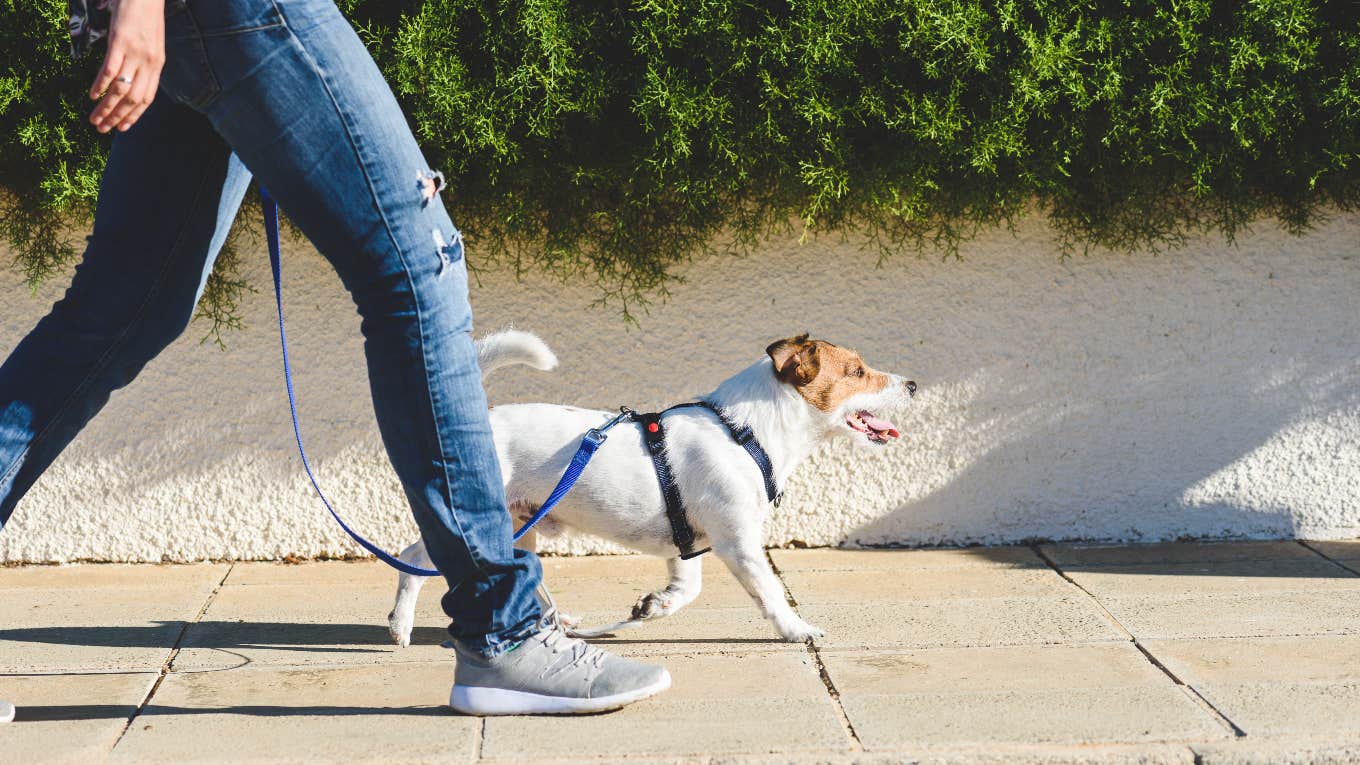Why Feeding Your Dog Right Before You Take Him On A Walk Can Actually Be Super Dangerous
It can lead to a very uncomfortable and potentially life-threatening condition.
 alexei_tm / Canva Pro
alexei_tm / Canva Pro If your dog is like most canines, all he or she needs to hear is the word "walk," and they're ready to go, day or night. But it turns out there are good, bad — and really bad — times to walk a dog.
Trainers say feeding your dog before a walk is dangerous and can even be life-threatening.
A post-dinner stroll is one of life's most enjoyable simple pleasures, and in humans, it actually promotes everything from digestion to blood-sugar regulation to a better mood.
But as dog trainer Adam Spivey of the U.K.'s Southend Dog Training explained in the video below, the same rules do not apply to the doggos in your life. Not only does a post-meal walk not help them, but it can actively harm them.
Going for a walk or actively playing after eating can cause a serious gastrointestinal condition in dogs.
"One of the most dangerous things you can do if you own a dog is feed your dog and then take it for a walk," Spivey explained in his video. "This can cause a life-threatening injury called bloat, which can be fatal."
Spivey recommended instead reversing the order of these activities — walk your dog and then give them a meal. It's important to make sure any dog walkers or dog sitters who care for your dog know this, too.
 Photo: Prostock-studio / Shutterstock
Photo: Prostock-studio / Shutterstock
Otherwise, you'll need to give your dog a good long window of rest — about 45 minutes to an hour after eating — before any exercise or strenuous play.
'Bloat' is also known as gastric dilatation-volvulus (GDV), and it is both dangerous and extremely uncomfortable for dogs.
So what exactly is "bloat" or gastric dilatation-volvulus? In the simplest terms, it's exactly what it sounds like — a dog's stomach filling with air.
Bigger, deep-chested dogs like Great Danes, Saint Bernards, Weimaraners, and Standard Poodles are more prone to the condition, as are males and anxious dogs. But any dog can be impacted.
Basically, during GDV, a dog's stomach dilates and swells full of air. The exact causes of this are unknown, but a dog simply swallowing too much air — because of eating or drinking too fast or from strenuous exercise — can result in it.
When the stomach swells, it can press against the dog's diaphragm, making it difficult to breathe. It can also constrict the blood vessels in major organs, causing further problems.
When 'bloat' or gastric dilatation progresses to volvulus, the stomach twists, and the dog will need emergency surgical intervention.
When the bloating of the dog's stomach escalates to volvulus, the twisting closes off both its entrance and exit. This will kill the dog without emergency intervention.
It is impossible to know if volvulus has set in, which is why veterinarians say to immediately seek treatment as soon as signs of GDV set in. Signs of the illness include:
- Swollen, bloated appearance, which is most obvious on the left side
- Gentle tapping behind the last rib that produces hollow, drum-like sounds
- Labored breathing
- Eventually, the dog will collapse onto its side
Once volvulus sets in, digestion is halted, and toxins begin building up in the dog's system, deepening systemic shock. Tissue in the stomach can begin to die, and the stomach can also rupture.
It is imperative that your dog be taken to an emergency veterinarian as soon as symptoms set in, as GDV requires extensive treatment that includes surgery to untwist the stomach and remove dying tissue.
Thankfully, roughly 80% of dogs survive GDV with medical interventions — and luckily, avoiding exertion after eating is an easy way to avoid the condition and make sure your dog has a long life of walks ahead of them.
John Sundholm is a news and entertainment writer who covers pop culture, social justice, and human interest topics.

